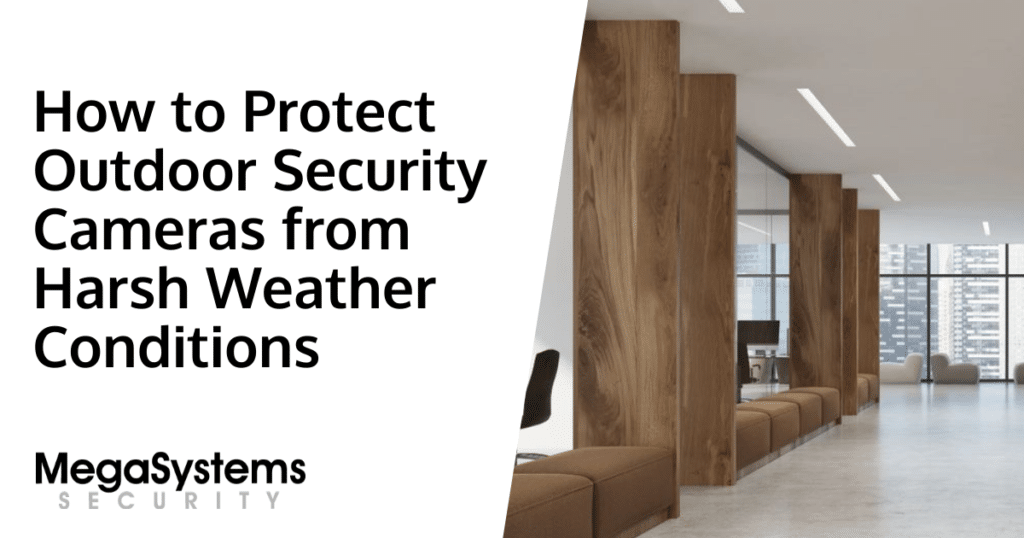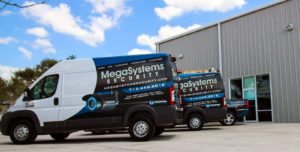Introduction
When considering how to protect outdoor security cameras from harsh weather conditions, it is crucial to understand that these devices play an essential role in maintaining the safety and security of both residential and commercial properties. Outdoor security cameras are designed to deter criminal activity and monitor surroundings, but they often face the challenges posed by extreme weather. In this article, we will explore in-depth strategies, features, and maintenance tips that ensure these vital components of any security system remain operational, regardless of adverse weather. We will discuss not only the practical steps but also the reasoning behind each measure so that even those unfamiliar with technical details understand the importance of each strategy.
Understanding Outdoor Security Camera Challenges
Weather-Related Threats
Outdoor security cameras are continuously exposed to various weather conditions such as rain, snow, high winds, and extreme temperatures. These factors can deteriorate the performance of the camera if not properly protected. For instance, moisture can seep into the internal mechanism, causing corrosion and rust, while freezing temperatures may damage plastic and metal components. The camera’s optics and electronic components require specialized materials and installation methods in order to safeguard against these hazards.
In addition, commercial and surveillance systems, such as those used in a busy hub like houston or tx regions, have to meet high durability standards. The environment in these areas can be unpredictable, making it absolutely essential to incorporate designs and materials that can withstand not only daily wear and tear but also sudden climatic extremes. Understanding the threats helps in choosing the proper protective systems and designing installations that are resilient in harsh weather.
Material and Technology Considerations
Various materials are used to encase outdoor cameras to prevent weather-related damage. The protective housing should be made of durable, corrosion-resistant materials that withstand moisture and ultraviolet radiation from the sun. Whether it’s a residential installation or a commercial surveillance system, the structure in which the camera resides must be engineered to endure temperature fluctuations and wind stresses. Technology-wise, modern outdoor systems now feature advanced sensor electronics that compensate for low-light conditions and temperature variations, ensuring continuous functionality.
Effective Installation Strategies
Planning and Pre-Installation
Every successful security system begins with careful planning during the pre-installation phase. This stage involves assessing the environment where the camera will be mounted, understanding potential hazards, and selecting the appropriate protective accessories. During planning, determining the camera’s ideal location is crucial. The camera should not only maximize the coverage area but also be positioned in a way that minimizes its direct exposure to harsh weather elements.
For example, if you are installing a camera in tx or houston where sudden downpours are common, it is important to test angles that keep the device sheltered under eaves or awnings while still providing a clear field of view. This process helps ensure that both the camera itself and the surrounding systems that depend on it are resilient and operational even after severe weather events. In addition, integrating considerations for advanced sensors and improved power management during harsh conditions becomes an integral part of any installation.
Choosing the Right Protective Housings and Accessories
There are various types of protective housings available for outdoor security cameras, each designed to address different environmental challenges. A key deciding factor is whether the installation is residential, commercial, or industrial. For commercial applications, particularly those in regions like houston and tx, robust housings with high ingress protection ratings are essential. These housings provide layers of physical protection that shield the delicate inner system from rain, dust, and even potential vandalism.
Furthermore, the accessories selected—such as waterproof sealants, anti-corrosion coatings, and sturdy mounts—play a pivotal role. Each accessory is designed with specific anticipated challenges in mind. For example, in a region prone to humid and rainy climates, choosing housings that are not only waterproof but also have temperature regulation features can extend the lifespan of the camera. This comprehensive approach to choosing accessories and housings benefits overall durability and operational efficiency.
Installation Techniques and Best Practices
Professional Installation vs. DIY
The decision between professional installation and DIY methods is often weighed based on the complexity of the security system and the potential challenges posed by the local weather conditions. Professional installers bring expertise in mounting systems correctly, selecting the right protective materials, and ensuring that the camera is optimally positioned for coverage and resilience. They provide insights into the best practices for positioning the camera relative to obstacles and the sun’s path, which helps to reduce the glare and prevent reflective distortions.
On the other hand, a DIY approach can be both cost-effective and satisfying for homeowners who have technical proficiency and are willing to learn about necessary techniques. However, the DIY route requires a considerable amount of research and attention to detail, particularly when setting up a complex security surveillance system. Understanding both the benefits and potential pitfalls of each method is essential for maintaining a reliable outdoor camera system that withstands harsh weather.
Securing Connections and Power Supplies
In addition to physical protection, ensuring that all cables and power supplies are secured is critical for outdoor installations. The cabling must be protected from water ingress and physical wear and tear. Often, cables are run through conduits or protective channels that shield them not only from inclement weather but also from interference and accidental damage. This is especially important for commercial systems where reliability and uptime are of the utmost importance.
When installing these systems, it is recommended to use weatherproof connectors and seals, as well as to regularly inspect the cable infrastructure. A detailed understanding of the electrical aspects, such as voltage fluctuations and surges, is necessary to choose power supplies that are sufficiently robust. The integration of surge protectors and backup batteries can also provide an extra layer of protection, ensuring that the camera continues in operation even during power disturbances.
Maintenance and Ongoing Protection
Regular Inspections and Cleaning
After the initial installation, ongoing maintenance is critical for ensuring the longevity and optimal functioning of outdoor security cameras. Regular inspections allow users to identify early signs of wear in the protective housings and seals. Cleaning the camera lenses and housing surfaces removes dirt, grime, and accumulated debris that can obstruct the view or damage the integrity of the materials over time.
Maintenance routines should include checking for loose fittings, ensuring that cabling remains intact, and confirming that all electronic components are free from moisture buildup. In areas where weather is a constant adversary, having a detailed schedule for maintenance can prevent minor issues from escalating into full-scale system failures.
Advanced Maintenance Tips and Troubleshooting
There are advanced strategies that can further enhance the longevity of outdoor systems. For example, applying special coatings that repel water and dirt, or installing additional protective covers during seasonal changes, are both effective. Knowing when to carry out a more comprehensive maintenance check—often during seasonal changes—is crucial. Each inspection should be methodical, ensuring that every aspect of the installation, from the camera lens to every connected cable, is evaluated.
Furthermore, understanding common challenges, such as lens fogging or minor corrosion, can lead to quicker, more precise troubleshooting. If issues are detected, addressing them promptly by consulting manufacturer guidelines or reaching out to professional service providers can prevent long-term damage. The importance of these detailed maintenance strategies lies in the reliability of the security system, ensuring that the camera remains a trusted component in any protection plan.
Key Considerations for Different Environments
Industrial and Commercial Challenges
Commercial systems often have different requirements compared to residential setups. In busy urban environments, particularly in places like houston, the frequency of severe weather events and urban pollution requires more robust designs and frequent inspection cycles. A commercial installation often involves a network of cameras where each component must seamlessly integrate as part of an overall security system. This interconnectivity calls for careful planning, ensuring that one failure does not compromise the entire system.
For industrial applications, selecting the right materials becomes even more critical. Exploring the trade-offs between cost, durability, and ease of maintenance plays a pivotal role in long-term planning. In these settings, professional installation is highly recommended to mitigate risks associated with inadequate protection measures.
Residential Installation and DIY Considerations
For homeowners considering a DIY installation, the focus should be on simplicity, cost-effectiveness, and durability. Learning how to protect an outdoor camera from harsh weather conditions in a residential context involves understanding your local climate and planning modifications to suit seasonal variations. This might include using adjustable brackets, temporary protective covers, or even portable shelter systems that can quickly be installed during a storm.
Recognizing the benefits of DIY installation is that it lets homeowners customize their security system precisely as needed without the overhead of commercial contracts. On the other hand, such installations also come with challenges such as ensuring that all aspects of the camera, from power supplies to internal electronics, are equally guarded. Therefore, consulting online resources, manufacturer tutorials, and even local professionals—especially for those in tx and houston—can provide valuable insights and additional protection strategies.
Conclusion
In summary, protecting outdoor security cameras from harsh weather conditions requires an integrated approach that covers proper installation, smart material selection, and diligent maintenance practices. By understanding the specific challenges posed by various weather conditions, choosing the right protective housings and accessories, and ensuring that both connections and power supplies are secure, property owners can ensure the resilience and longevity of their security systems. Whether managing a commercial surveillance network or performing a simple residential installation, these strategies provide a comprehensive guide to keeping your camera functioning in robust and ever-changing environmental conditions.
Ultimately, by applying these detailed strategies and understanding each element—from installation methods to the importance of regular maintenance—users can create a reliable and trusted security system that stands firm against nature’s most aggressive challenges. This depth of focus ensures that the investment in security is not only protected, but continually ready to serve its purpose, ensuring safety for both people and property in any setting.


